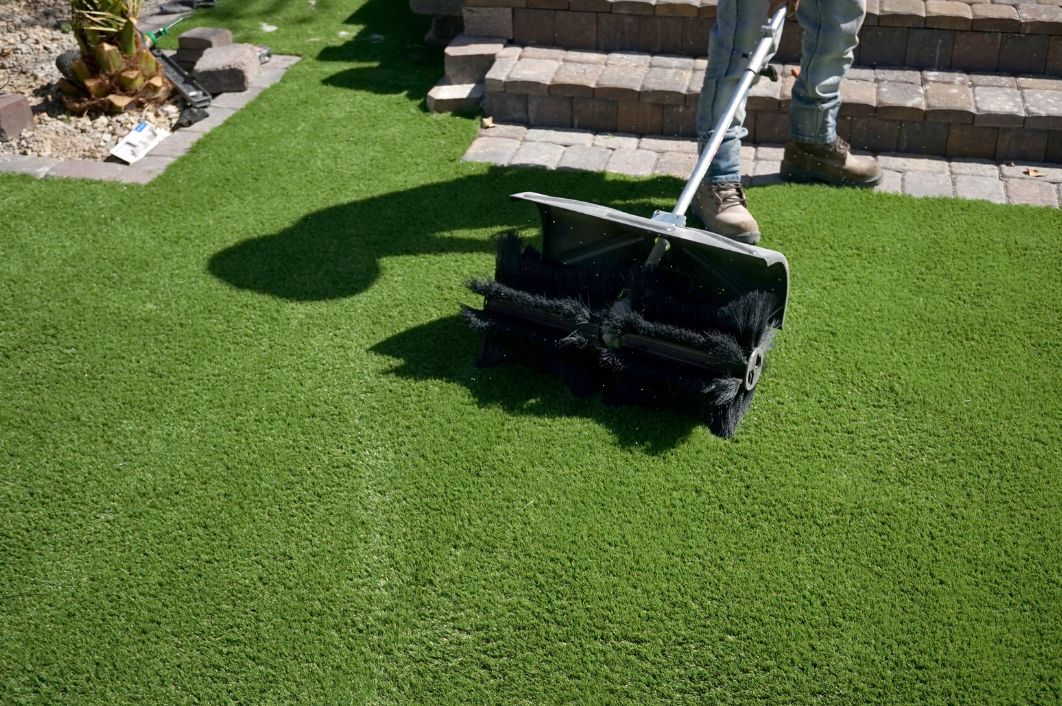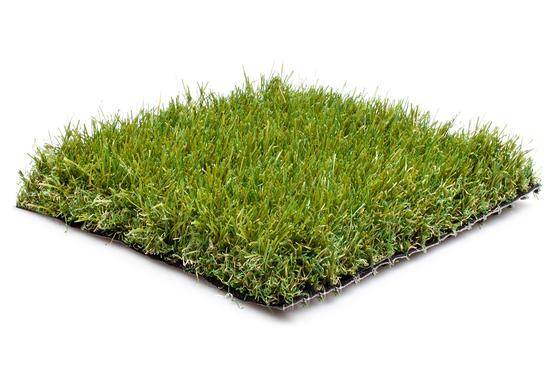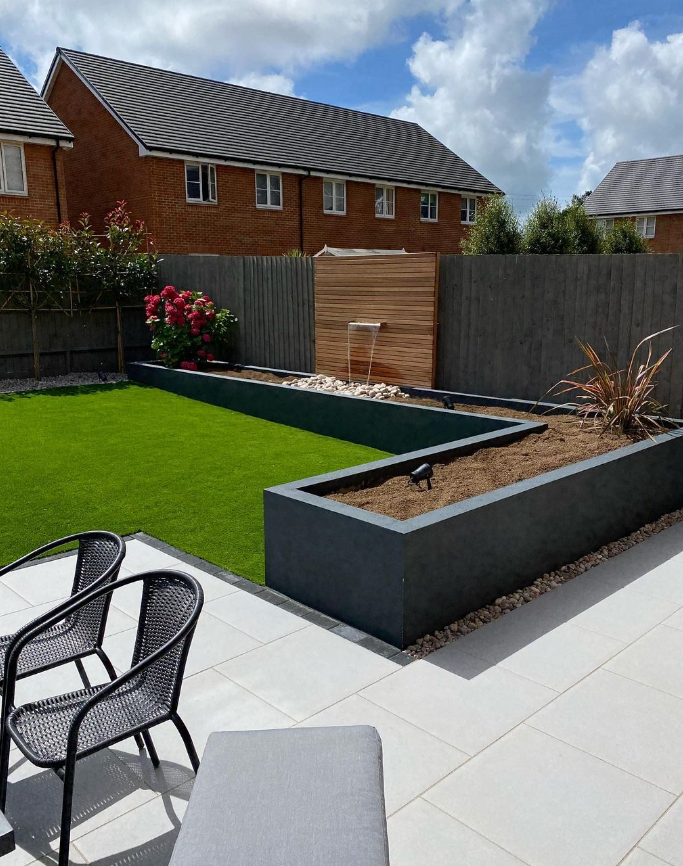
What Brushes to Use to Refresh Artificial Grass
Keeping artificial grass looking sharp doesn’t always call for big tools or big jobs — sometimes, a good brush is all it takes. That said, not just any brush will do. The right one can help your grass bounce back after footfall, weather or the occasional garden gathering. The wrong one? It could actually wear it down faster. So, if you’re wondering how to refresh artificial grass or just want to keep things looking fresh, it’s worth knowing which brushes are best — and how to use them.
Understanding the Importance of Power Brushes

Maintaining the Appearance and Longevity
Artificial grass tends to hold up well, but without a bit of upkeep, it can lose its spark surprisingly quickly. Power brushes step in here as more than just a helpful tool — they’re often the secret to keeping your lawn looking like it was laid yesterday. By lifting the blades and clearing away settled grime or leaves, they help your grass stay full and evenly textured. It’s not just about looks either. Regular brushing reduces wear in high-traffic areas, so your lawn stays strong for longer. It's one of the best artificial grass maintenance tools around.
Preventing Matting and Flattening
Footfall, garden furniture, pets… they all press down on synthetic turf over time. Left alone, those flattened patches can start to look worn and patchy. A proper artificial grass brush helps lift the fibres, letting them spring back to shape. But be warned — the type of brush really matters. Stiff bristle brushes for synthetic grass might seem like they’ll get the job done quicker, but they can cause more damage than good, tearing into fibres instead of tidying them. If you’re after something efficient and gentle, it’s worth checking out power brushes designed for artificial grass.
Choosing the Right Brush for Artificial Grass
Soft Bristle vs. Stiff Bristle Brushes
Not all bristles behave the same. Soft bristle brushes for artificial grass tend to be more forgiving, especially on smaller lawns or those with shorter pile heights. They're ideal for regular touch-ups without the risk of wear. Stiff bristle brushes for synthetic grass, on the other hand, might seem tempting if you’re tackling debris or want to lift the pile quickly, but they’re not always kind to synthetic fibres. Too much pressure or the wrong material can scratch, bend or even pull at the fibres. So, if you’re unsure, soft often wins — unless you know your turf can handle a tougher brush.
Best Materials for Artificial Grass Brushes
It’s not just about softness. What the bristles are made of plays a part too. Nylon and polypropylene tend to strike a decent balance between strength and flexibility, which helps get the job done without damaging the surface. They’re usually tough enough to deal with garden muck, yet gentle enough not to fray the fibres. For outdoor brushes, UV-resistant materials can make a big difference. They’ll hold up better through sunshine and rain, just like quality artificial grass does. The right artificial grass brush could keep your garden looking its best with less fuss.
Using a Power Brush for Deep Cleaning

How Power Brushes Improve Maintenance
There’s brushing, and then there’s deep cleaning artificial grass with a motorised tool. Power brushes for artificial grass do a lot of the heavy lifting — quite literally. They sweep up leaves, lift flattened fibres, and help shake out embedded dirt that might be sitting deep in the pile. Compared to manual brushing, they tend to give you more consistent results in less time, especially if your lawn sees plenty of foot traffic or has collected more debris than usual. It's not just about tidying up — it’s about giving your grass a proper refresh from the roots up.
When to Use a Power Brush
You won’t need to bring the power brush out every weekend, but using it every few months or after events, heavy rain, or seasonal changes can really help. If the grass is starting to look a bit tired or patchy, that’s usually a good sign. Power brushing is especially handy in early spring and late autumn, when natural debris like pollen or fallen leaves builds up fast. It’s one of the most effective artificial grass cleaning tips you can follow.
Handheld Brushes for Small Areas
Best Practices for Effective Brushing
Handheld brushes can be surprisingly effective — if you use them the right way. Short, gentle strokes tend to work best, especially in tighter spots where power brushes can’t reach. Think corners, edges, or around garden ornaments. It helps to brush against the natural direction of the pile just slightly to lift the fibres, but don’t press too hard. Too much force might flatten the blades more than help. Steady and light usually gets better results than rushing through.
Recommended Brush Types for Spot Cleaning
For odd patches or tricky shapes, look for handheld brushes with a long handle and soft-to-medium bristles. They’re easier on your back and easier on the grass, too. Curved or angled heads often help get into awkward corners. If you’re brushing around decking or paths, a brush with a narrower head can give you a bit more precision, without accidentally scraping against anything you shouldn’t. Even the best artificial grass maintenance tools won’t help if they can’t reach the spots you need them to.
Tips for Proper Brushing Techniques

How Often to Brush Your Artificial Grass
Brushing too often might feel like overkill, but leaving it too long can let fibres flatten or grime settle in. As a rough guide, once every week or two is a solid starting point — but that depends on how the space is used. Got pets? Expecting visitors? Just had a storm blow through? Those are all moments where a quick brush can make a big difference. And if your turf sees little action, a monthly refresh might be enough to keep it neat without overdoing it.
Brushing Patterns for Best Results
A bit like mowing real grass, brushing works better with a bit of pattern. Instead of always brushing in the same direction, switch it up. Work in diagonals or alternate rows. That way, the fibres don’t start to lean in one direction over time. It's not just about appearances either — switching your brushing pattern helps avoid uneven wear and keeps the pile standing tall and consistent.
Want to keep your grass looking great? Then brushing isn’t just helpful — it’s the quiet little habit that makes all the difference.


